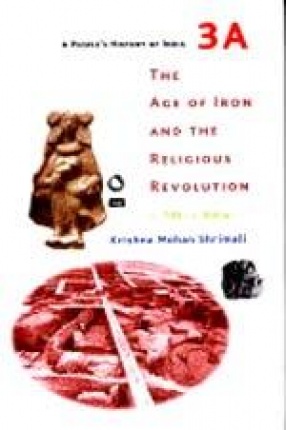The Blueprint for an Atlas of Early Indian Religions
Volume Title:part I. Deities, epithets and religious structures bearing on early Indian religions (data from Epigraphia Indica and Corpus inscriptions Indicarum -- part II. Deities, sites, monuments, sculptures and other art remains bearing on early Indian religions (data from annual reports o f the Archaeological Survey of India).
This has been a dream venture of the author for the last more than three decades. It is an attempt to show directions for mapping religious historiesof the Indian sub-continent over a period of several millennia – from the prehistoric times to c.1300 CE. It goesbeyondconventional frontiers of an*Atlas by transcending narrow confines of the discipline of ‘geography’ by including such dimensions as “types of religions” and “anthropologyof the sacred”. How do topography and ecology and the so-called ‘highland’ and ‘lowland’ cultures affect cultic practices? Do religions act as”catalyst’ for urban growth? Can any pattern be discerned in the origin and dispersal of Shiva, the Mahadeva and his followers? Why do LordRama and Lord Krishna emerge as avatars of Vishnu but Lord Ganesh and Devi Ganga respectively remain son and daughter of Shiva? How andwhy does Lakulish, allegedly the founder of the Pashupata sect of the Shaivas acquire a club in his hand after the eighth century CE in Karnataka?How do we account for iconographic changes in representations of deities across temporal and spatial axes? Why are Hero-stones more prolific inupland areas and relatively infrequent in the large agricultural tracts of the indus and the Ganga valleys and in the agriculturally rich delta areasof the peninsula? Do the phenomena of Hero-stones and emergence of more than 3000 tirthas between c.600 and c.1300 CE have any links with thesimultaneous proliferation of land grants to religious beneficiaries of varied hues? How does the tracking of inter-religious and intra-religiousspaces help us in understanding strategies adopted by different religions vis-à-vis one another? This monograph seeks to answer such questionsby suggesting ways of cartographic delineation of religious developments in early India. Problems of “locational context’ and mapping ‘portableantiquities* (including ‘scattered’ art remains in museums) have also been looked into. Data comprising of 6,000 entries on deities, religiousepithets and structures, sites, monuments, sculptures and other art remains bearing on early Indian religions based on Epigraphia Indica, CorpusInscription indicarum and Annual Reports of the Archaeological Survey of India (1902-03 to 1936-37) are being presented here. Two maps illustratingthe modus operandi of this experimental exercise are also included in this monograph.
Get it now and save 10%
BECOME A MEMBER










Bibliographic information